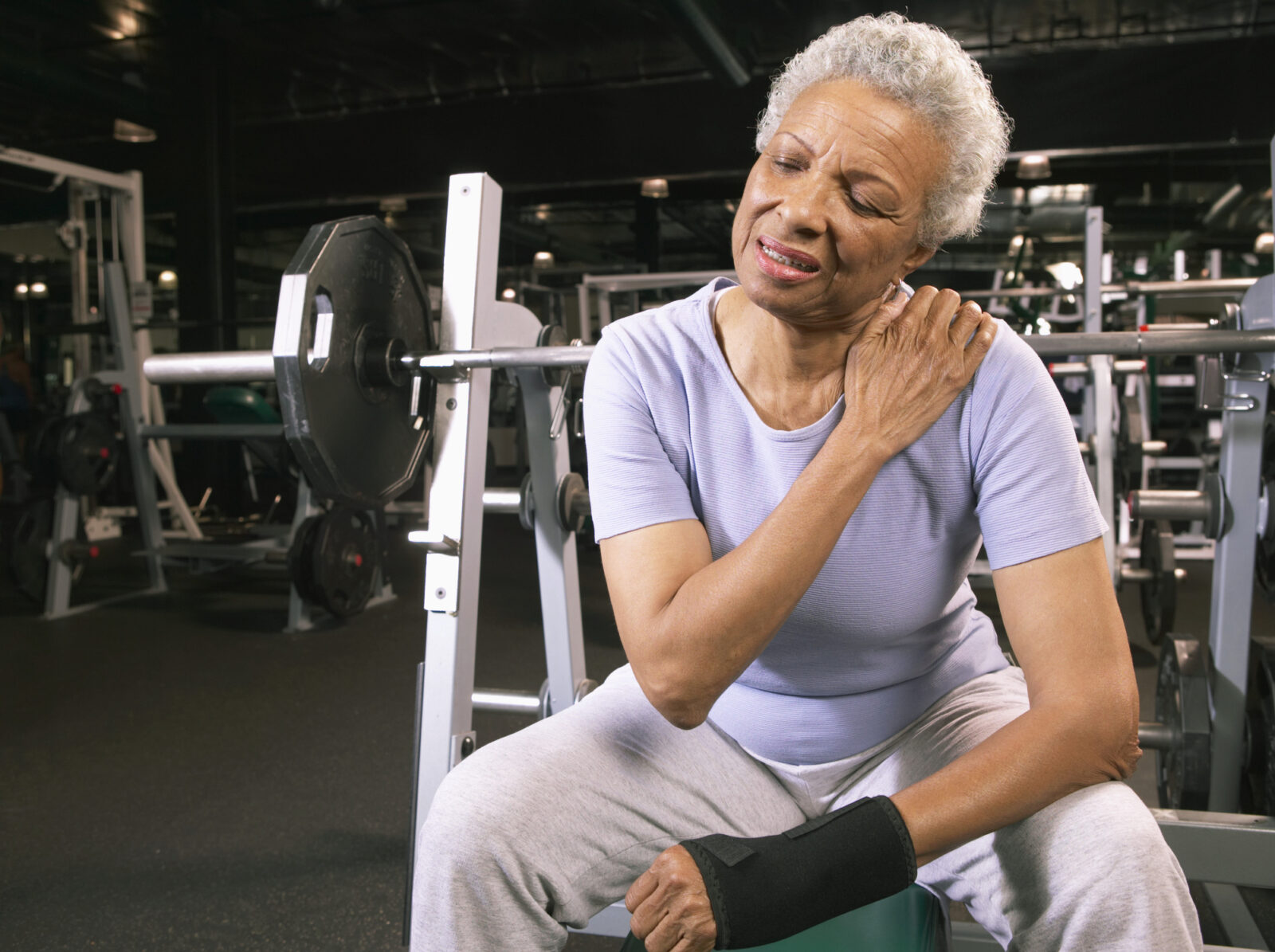Good vs. Bad Pain

It wasn’t too long ago that the mantra of physical fitness was “No pain, no gain.” Thankfully, we’ve realized that forcing your body to endure pain can actually mean you are overtraining and risking injury, like a torn ligament. Still, there are good kinds of pain; the key is knowing the difference between what pain is good and what is bad.
What is good pain?
Good pain is directly related to recovery from activity. It is the soreness, achiness, or burning sensation felt while doing the exercise or right afterward and indicates that your muscles are getting stronger. For example, when you are lifting weights, that burning is due to the build-up of lactic acid. Lactic acid fuels your cells by breaking down glucose and other carbohydrates so you can complete that extra lift during intense training. Delayed onset muscle soreness (DOMS) is what you experience after lifting weights: a generalized ache that starts a few hours to a couple of days after the workout. Microscopic injuries to the muscle fibers and connective tissue can occur when you begin to increase the intensity or begin a new exercise. DOMS dissipates in a short amount of time and does not prevent you from doing normal day-to-day activities.
Thuy Kim Nguyen, doctor of acupuncture and Oriental medicine at The Cleveland Clinic, summarizes, “By pushing our physical boundaries, we can perform at our best. This almost always comes at the cost of feeling some level of pain. But it’s a different kind of pain than the kind that tells you something is wrong.”
What is bad pain?
Bad pain can be sharp during or after exercise or it can be chronic and persistent; both warrant special attention. Sharp pain usually feels like stabbing or throbbing; it can continue for a while and may indicate something happened during the workout session. Chronic pain is much more difficult to pinpoint; it may be due to a musculoskeletal imbalance, degeneration, or aging.
Make sure to seek a professional medical opinion for any pain that:
- Prevents you from moving fully
- Is located where a previous injury was
- Is accompanied by swelling
- Remains despite care like cold packs or anti-inflammatory medicine (e.g., ibuprofen)
- Is accompanied by nausea, vomiting, fevers and/or chills
Pain is part of the human condition, but it shouldn’t interrupt your quality of life. Nearly 50 million Americans live with chronic pain. September is Pain Awareness Month, a good time to learn more about pain and pain management. Whether you are having good or bad pain, knowing the difference is key to living the good life.
The information in this article is not intended to replace the advice of your healthcare provider. Talk to your doctor before you start an exercise program or if you feel pain.
![Charlesgate [logo]](https://www.charlesgate.net/wp-content/uploads/sites/218/2016/12/logo-new.png)